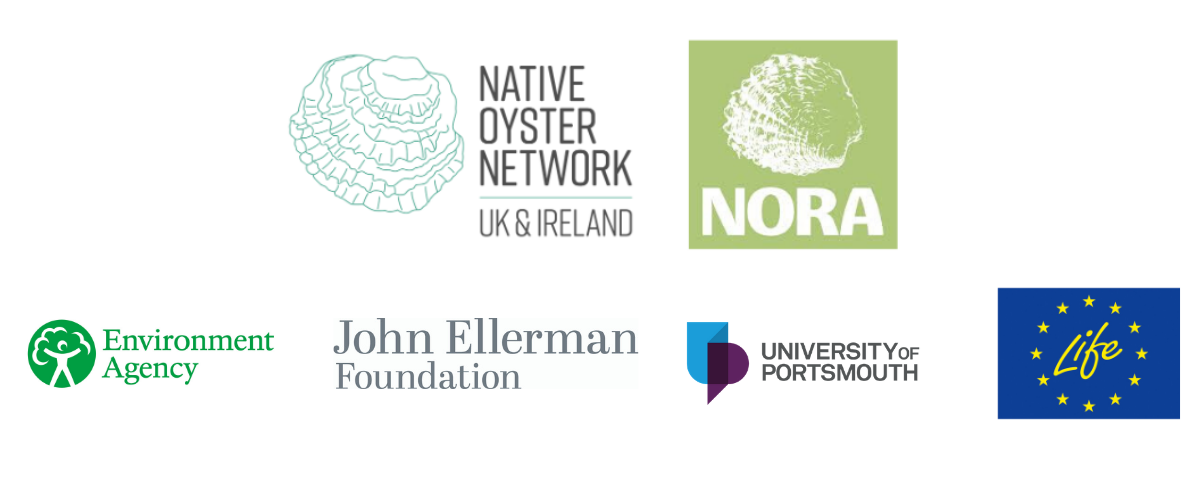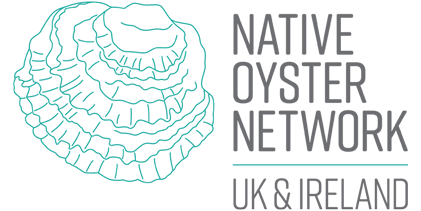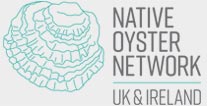Native oyster restoration seeks to reverse through human activity, the damage sustained by oyster reefs over the past few centuries. This positive activity, which sees native oysters and their habitat returned to waters where they are currently absent or have significantly declined, also carries with it the risk of doing harm. This is because the movement between locations of people, equipment and especially oysters and marine derived material such as shell, can also unintentionally result in the introduction of highly damaging diseases or high impact Invasive Non-Native Species. There are a number of oyster pathogens which have been responsible for declining numbers of oysters in infected regions, whereas INNS associated with the movement of oysters have resulted in local changes in habitat quality, as well as increased predation on native species. As such it is critical that native oyster restoration activities are aware of these risks and take appropriate
As native oyster habitat restoration is a new and growing field in Europe and globally, appropriate methods are still being developed. In this report, NORA and NON-UK and Ireland have sought to bring together the current state of knowledge regarding appropriate biosecurity approaches relating to native oyster restoration in Europe.
This report presents biosecurity guidelines for conservation and restoration of native oyster habitat in Europe, based on current knowledge and experiences. The report sets out a series of steps developed to provide an objective, repeatable, transparent, and documented assessment of the risks and provides example approaches for their reduction. The guidelines have been prepared through a series of technical workshops led by the Native Oyster Restoration Alliance and the Native Oyster Network – UK & Ireland, bringing together experts and practitioners in the field. In January 2020 NORA and the Native Oyster Network – UK & Ireland co-hosted a “European Native Oyster Biosecurity Workshop” at Heriot-Watt University during which these guidelines were developed. The workshop was supported by Wetlands International European Association via the EU Life grant, John Ellerman Foundation, University of Portsmouth, and the Environment Agency.
The guidelines should be used as part of a comprehensive risk assessment with a level of effort appropriate to the situation, national legislative framework and international guidance such as the IUCN Guidelines for Reintroduction and Other Conservation Translocations (2013), and the World Organisation for Animal Health (OIE) guidelines.
Download the report here and please share widely.
Citation: zu Ermgassen, P.S.E., Gamble, C., Debney, A., Colsoul, B., Fabra, M., Sanderson, W.G., Strand, Å. and Preston, J. (eds) (2020). European Guidelines on Biosecurity in Native Oyster Restoration. The Zoological Society of London, UK., London, UK.
The editors would like to extend their thanks to all who have contributed to this effort as chapter authors, as well as through the open consultation and review process. In addition to the authors, the following authors are acknowledged: Isabell Arzul, Katy Barrett, Tim Bean, Anneke van den Brink, Cass Bromley, Janet Brown, Jack Clifford, Daniel Cowing, Thea Cox, Liam Darcy, David Donnan, Anamarijia Frankić, Celine Gamble, Ben Green, John Hamilton, Boze Hancock, Jakob Hemmer Hansen, Chris Hauton, Jacob Kean-Hammerson, Janet Khan, Sharon Lynch, Homère Alves Monteiroo, Bernadette Pogoda, Dan Renton, Catherine Scott, Kelsey Thompson, Raimund Weber and Rob Whiteley.



